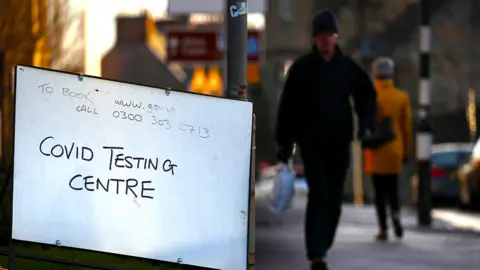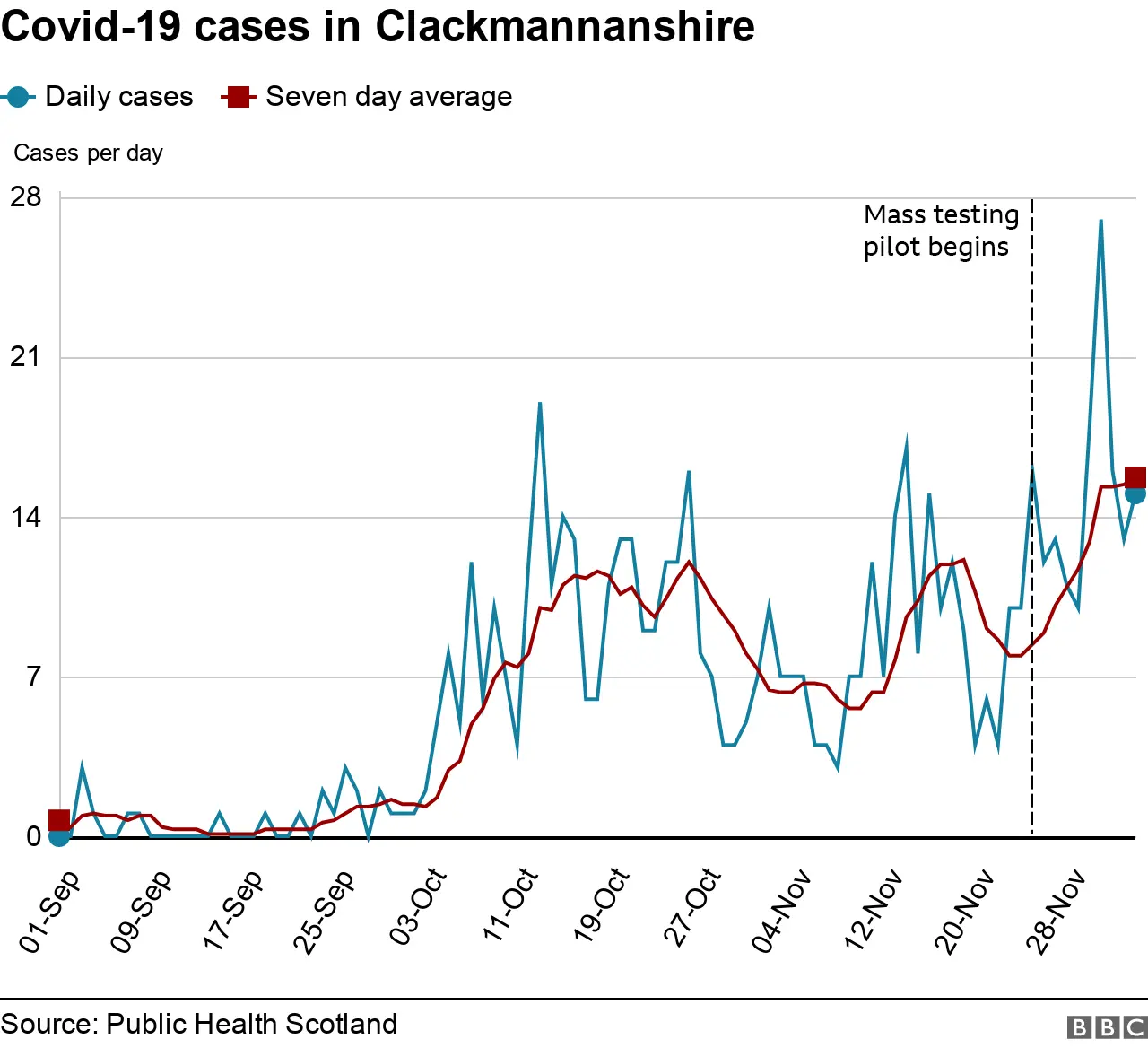Covid in Scotland: Why are Clackmannanshire's rates so high?
 PA Media
PA MediaClackmannanshire had one of the lowest rates of Covid-19 in Scotland two months ago, but a recent rise in cases appears to have made it the country's coronavirus hotspot.
NHS Forth Valley says there is evidence of the virus spreading within the community and local care homes and a mobile testing centre has been in Alloa since 26 November.
It is part of a trial scheme testing people without symptoms in a bid to trace the virus more effectively.
The Scottish government has identified this as the main reason that cases have gone up in past 10 days.
Announcing the review of Covid levels for local authorities, First Minister Nicola Sturgeon said: "We are confident at this stage that the rise in case numbers can be attributed to the mass testing pilot. In other words, the issue is more cases being identified rather than a rise in transmission.
"Obviously we will keep this under review, but we have decided that a change of level would not be merited at this point."
Clackmannanshire's figures show a spike in the number of positive cases on 1 December, a few days after the mass testing scheme started in Alloa.
But cases also rose sharply at the beginning of October, well before the trial started.
One explanation for that increase could simply be that previous low rates meant there were more people to be infected with the virus.
The county also borders Stirling, which is due to be moved out of level four on Friday, and saw its own surge in cases during October and November.
The Public Health Scotland map displaying cases by neighbourhood shows that the highest concentration of cases are indeed in the west of the county, near Stirling.
While health officials compile the figures by local authority, the reality is that there is a lot of movement across county boundaries for work, school, shopping or social visits - and all this increases the spread from one area to another.
Another piece of context is that the common way to calculate Covid-19 infection rates is per 100,000 people.
The population of Clackmannanshire, which is under level three restrictions, is only 51,540, so the actual number of cases is lower than the rate.
In the week up to 4 December, Public Health Scotland figures showed that, on average, almost 16 cases a day were being detected in Clackmannanshire.
There were 109 cases detected over those seven days, which translates into a weekly rate of more than 200 per 100,000 people.

Finally, it's worth noting that the percentage of cases coming back positive is low - in fact among the lowest in Scotland.
The "positivity rate" is important because it is one of the measures that the Scottish government uses when assessing how concerned they are about infection rates in a local area.
The seven-day average of this rate on 4 December was 3%, with only the islands, Highland, Moray and Dumfries and Galloway lower.
